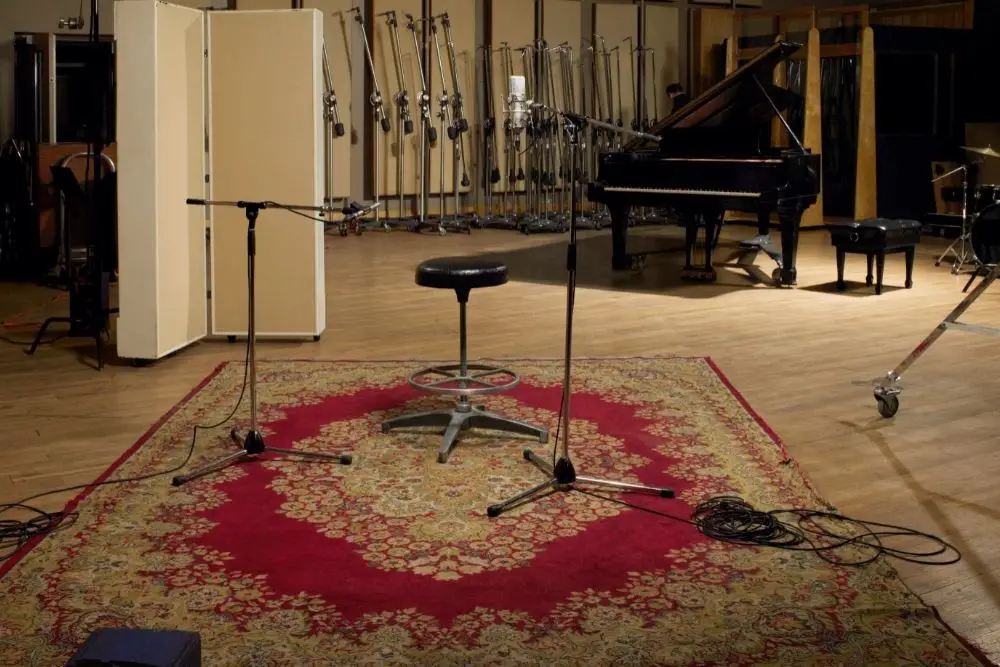Table of Contents
Introduction
Not sure how to soundproof a room for recording?
We have listed the best ways to soundproof a room – the majority of them are easy to do, affordable, or both.

Recording instruments or even vocals is far from easy. There are a lot of things to account for, including equipment, microphone positioning, even the contentment and performance of the musician or singer.

On top of that, we simply do not have infinite takes to make sure we get the perfect recording we are after.
This is why we need to make sure that everything that can be accounted for is as close to perfect before we hit the record button!
Whether you are a bedroom producer or the owner of a recording studio, here are the best soundproofing methods that you can start setting up today.
Why Soundproofing Is Important
First of all, let’s quickly go over why soundproofing is important.
To achieve the best recording possible, we need to make sure that there is no outdoor sound coming into the room, and that the room is as dry as possible.
The former is obvious: we don’t want our recording to feature the sound of a car driving by, or the sound of dogs barking from across the street.
While these unwanted sounds can be edited out with processes like noise reduction, it’s not easy, nor is it always possible.
The latter – to make the room as dry as possible – means to prevent echoes and reverb. In other words, to stop sound from reflecting off the walls. We want to record the sound in its purest state so that we have greater flexibility at the mixing stage. Echoes and reverb can not be edited out.
Soundproofing Methods
There are three main goals when soundproofing a room:
- To absorb sound
- To stop sound from reflecting off the walls
- To stop outside sounds from getting in
To absorb sound, we must furnish the room with high-density materials and objects. These will soak up sound as it travels around the room.
To stop sound from reflecting off walls and hard surfaces – which will be picked up by the microphones – we must cover the walls with absorbent materials or uneven objects that will reflect sound in different directions.
And to stop unwanted outside sounds from getting inside the room and being recorded, we need to cover windows, walls, and door gaps.
Rugs
Any thick rug will help to soundproof your room for recording. If your room has carpet, that is even better – but it does not mean you can’t lay an extra rug or down on top of the carpet.
This is especially important for rooms with hard flooring, where you might have noticed there is more of an echo. If your room has a hard floor, the more of it that you can cover up, the better.

Sofa
Sofas are made of high-density materials, making them great for absorbing sound. By simply having a sofa in your room, you are soundproofing your room to a certain degree.
This also goes for beds, armchairs, even beanbags. And you add to the effectiveness of these by throwing in a few cushions and pillows.
Curtains
If you have a window in the room you are recording in, you will want to cover it up with thick curtains.
Not only are windows (especially single-glazed windows) areas where sound can get into your room, but the hard glass surface can create problems with sound (particularly high frequencies) reflecting back off the glass and being recorded.
Again, the thicker the curtains, the better. You can also cover the window itself with foam padding or any material that is high-density.
Blankets
Just like curtains, blankets can be hung around the room to make it more soundproof. This is a simple method that is sometimes used to create a makeshift vocal booth, with the blankets hung around the vocalist being recorded.
Quilts, while harder to hang, would be the more effective option due to their thickness.
Acoustic Panels
Acoustic panels are the best way to soundproof a room for recording. While they are the most expensive option, they can also be built with several materials that you can buy from DIY shops.
You can buy acoustic panels to secure to the walls of your room, or acoustic panels that have wheels, used for placing close to the instrument or microphone setup.
If you want to build your own acoustic panels, it involves putting together a wooden frame, filling it with mineral wool or fiberglass insulation, then enclosing it in a thick fabric.
Foam Tiles
Foam tiles are less effective than acoustic panels, but are more affordable. These are available to buy as “corrugated” high-density foam panels that can be stuck to walls as tiles.
The reason that foam tiles are corrugated, or jagged, is so that sound is not just absorbed, but also refracted. This prevents sound from reflecting directly off the wall to an opposite wall, and reflecting back again.
Egg Cartons
Egg cartons work in the same way as acoustic foam tiles. By placing these on the walls of your room, you can prevent high frequencies from reflecting and being picked up in your recording.
While not as absorbent as the other methods, egg cartons are more budget-friendly and can serve as a temporary solution if you are just recording something once.
Conclusion
Whether you are recording a singer, instrument, or podcast, soundproofing is important for making sure that your recording is clean, crisp, and flexible for the editing and mixing stage.
By using any of the above soundproofing methods, you can guarantee a huge difference in the quality of your recordings!
Remember: another thing to be aware of is the room where you are recording. In general, the smaller the room, the better, as this reduces the distance that sound can travel. If you do not have a professional recording studio, the best room to use in your house is a well-furnished bedroom or small living room.